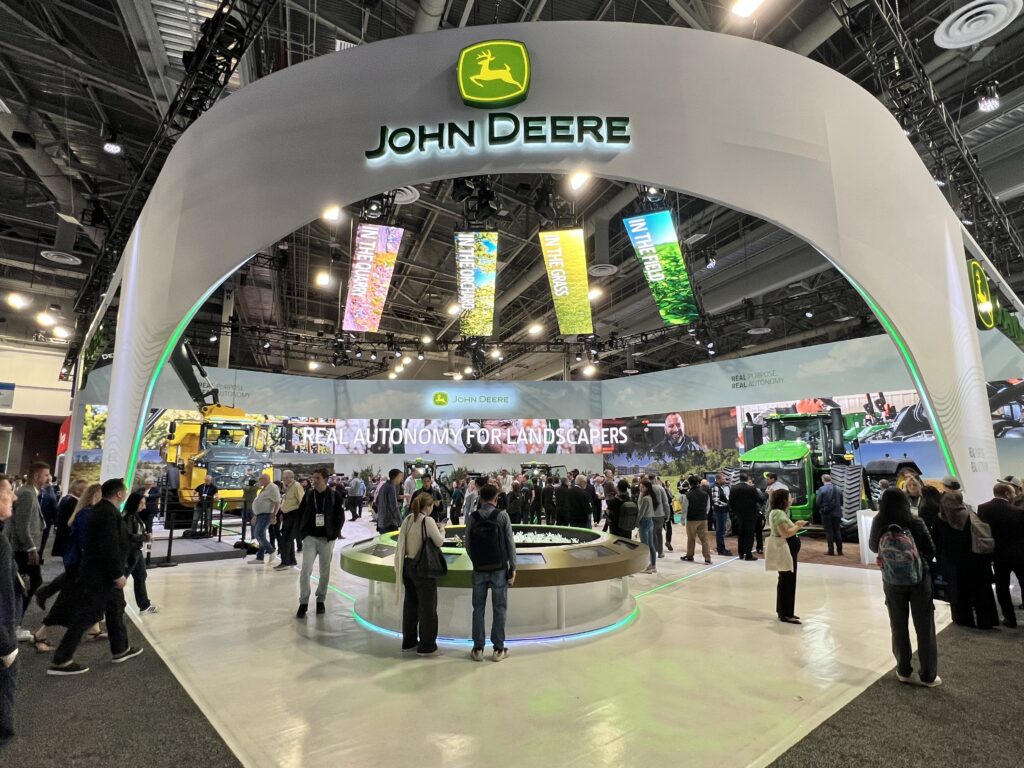Deere CTO: “Labor is a common challenge…We believe autonomy can be part of that solution.”
LAS VEGAS—The Consumer Electronics Show (CES) is a weird one. The media days in the run-up to the show officially opening are also weird—a mashup of things that are objectively boring and ridiculous and things that are objectively interesting and important. I sat through approximately 84 press conferences yesterday and one really stood out to me: John Deere. Deere has been exhibiting at CES for the past few years which may seem incongruous. Do they make agricultural and construction implements? Yes. Are they also a visionary company with a tech-first mentality and razor-sharp execution? Also yes.
But here’s why that press conference hit me so hard. I can’t fully articulate how jarring it is to hear one brand talk quite earnestly about ovens running small language models for AI-assisted cooking (I guess), then hear another brand, Deere in this case, talk about global food demand, farm labor shortages and how the only viable solution is AI-enabled agricultural production. The former is boring and ridiculous, the latter is interesting and important.
By the numbers, the world’s population is expected to pass 9 billion by 2050 and the United Nations Food and Agriculture Organization (FAO) estimates that food production needs to increase by around 70% to meet future demand. The American Farm Bureau Federation reckons there are 2.4 million domestic farm jobs that need to be filled annually. Agricultural productivity is in rough shape for a number of reasons but mostly around resource degradation, out-moded practices, an aging workforce, the seasonal nature of the work, the physical demands of the work, the low wages paid for the work, immigration restrictions, rural-to-urban migration…that to say, it’s a big, complex problem.
Specific to the labor shortage, “This has been a persistent challenge that we are intent on solving because our customers all have work that must get done,” Deere’s Chief Technology Officer Jahmy Hindman told the collection of media packed into a ballroom at Mandalay Bay. In the US, the average farmer is over the age of 58 and putting in 12- to 18-hour days, he said. “Labor is a common challenge. They have to figure out how to do more work with fewer people. This is the kind of challenge we love to work on and solve for our customers. We believe autonomy can be a part of that solution.”
Deere debuted its automation tech stack at CES in 2022. This time around, the company showcased its second-gen automation tech stack which, generally, improves the combination of computer vision, artificial intelligence (AI), cameras, guidance systems, mechanical systems, etc…The autonomous 9RX tractor, for instance, sports 16 cameras arranged in pods to deliver a 360-degree view of a field. It calculates depth over large distances to let the tractor move faster and pull more equipment. The autonomous 5ML orchard tractor features Lidar sensors to support hands-off operation in dense canopy environments where GPS may not be enough. And Deere is gradually electrifying a lot of these machines which is, again, interesting and important.

Back to Hindman. “This doesn’t just happen.” It’s the result of a tech-first mentality and razor-sharp execution. And, in addition to being interesting and important, it’s also quite cool. “But creating cool technology isn’t what we do,” he said. What Deere does is create real solutions for real problems. And the divergence between global food demand and available labor is a real problem. Fortunately, Deere is delivering real solutions. Other brands should take note.

